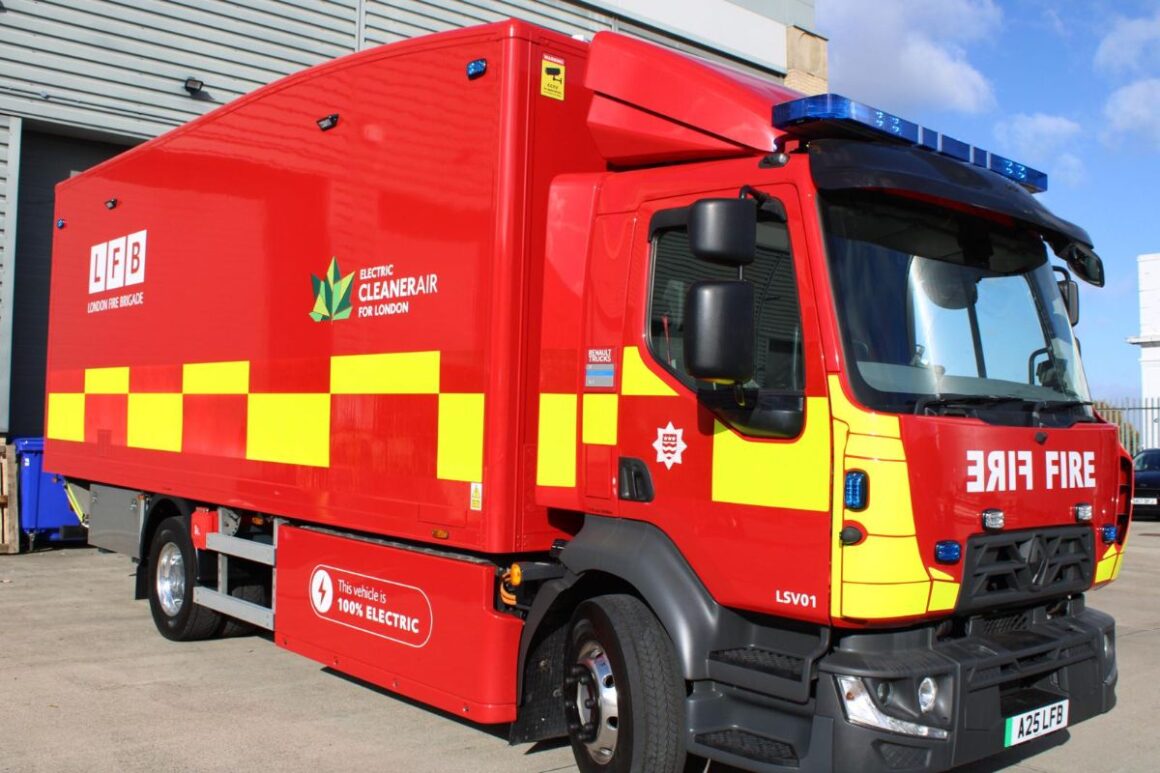The London Fire Brigade has become the first fire service in the United Kingdom to operate a fully electric driver-training and operational fleet, deploying eight Volvo XC40 electric cars alongside two Renault Trucks E-Tech D electric lorries. The vehicles were unveiled at the Brigade’s Operational Support Centre (OSC) and will be used to deliver essential equipment across London, as well as support driver training for senior officers.

The two 16-tonne Renault Trucks E-Tech D replace older diesel vehicles that had been in service for more than two decades. Each truck is equipped with a 66 kilowatt-hour (kWh) battery, providing an operating range of up to 400 kilometres per charge. The introduction of the electric trucks follows two years of trials at the OSC conducted by the Brigade’s Fleet Liaison Equipment and Engineering Team (FLEET).
Alongside the electric trucks, the Brigade introduced a fleet of eight Volvo XC40 electric vehicles to replace hybrid and petrol cars previously used at its training centres in Ruislip, Beckton, and Croydon. These vehicles will be used by instructors to teach and refresh blue-light driving skills for senior officers. The XC40 has a real-world range of approximately 450 kilometres, although it has since been superseded by the EX40 model.
The electric vehicles are part of the London Fire Brigade’s broader efforts to reduce emissions and decarbonize its fleet. According to Deputy Assistant Commissioner Mark Davidson, the move supports sustainability commitments, improves air quality, and contributes to London’s net-zero goals. The EVs are intended to demonstrate the feasibility of integrating electric vehicles into emergency service operations while maintaining operational effectiveness.
This deployment marks a significant step for the UK emergency services sector, highlighting the potential for electric vehicles to replace older diesel and petrol vehicles in both training and operational roles. The Brigade’s experience with the Renault E-Tech D trucks and Volvo XC40 cars may serve as a model for other fire and rescue services considering fleet electrification.
